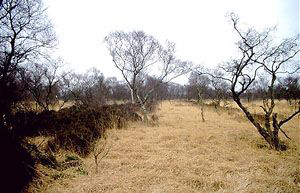
Astley Moss Nature Reserve is ideal is one of the largest remaining fragments of the Chat Moss complex, most of which has been lost due to being cut-over for peat or being drained for agriculture.
Invertebrates recorded at Astley Moss Nature Reserve are specially adapted to the acid environment. Ponds between the moss hummocks provide the ideal conditions for the aquatic stages in the lifecycle of many species of dragonfly. Ten species have been recorded on Astley and, of those, five are known to breed.
Willdife Highlights: Apart from the dragonflies, Astley Moss is also important for a number of birds, particularly wintering raptors such as Hen Harrier, Short-eared Owl and Merlin. It supports breeding species including Curlew, Willow Tit, Tree Pipit and Whinchat. Many of the native British mammals occur here with Common Shrew, Rabbit, Bank Vole, Short-tailed Vole and Long-tailed Fieldmouse all included as prey for the hunting birds.
No Comments Yet - Why not be the first to leave a comment
Every effort is made to make sure that all the information is correct but we strongly recommend that you call Astley Moss Nature Reserve before you set off on your day out to confirm opening times and admission prices.
Please also note that the position on Google maps for Astley Moss Nature Reserve is a rough estimate using their postcode in the database and might be slightly out.
It may also be worth clicking the web link for Astley Moss Nature Reserve to see if there are any special events coming up or currently on.